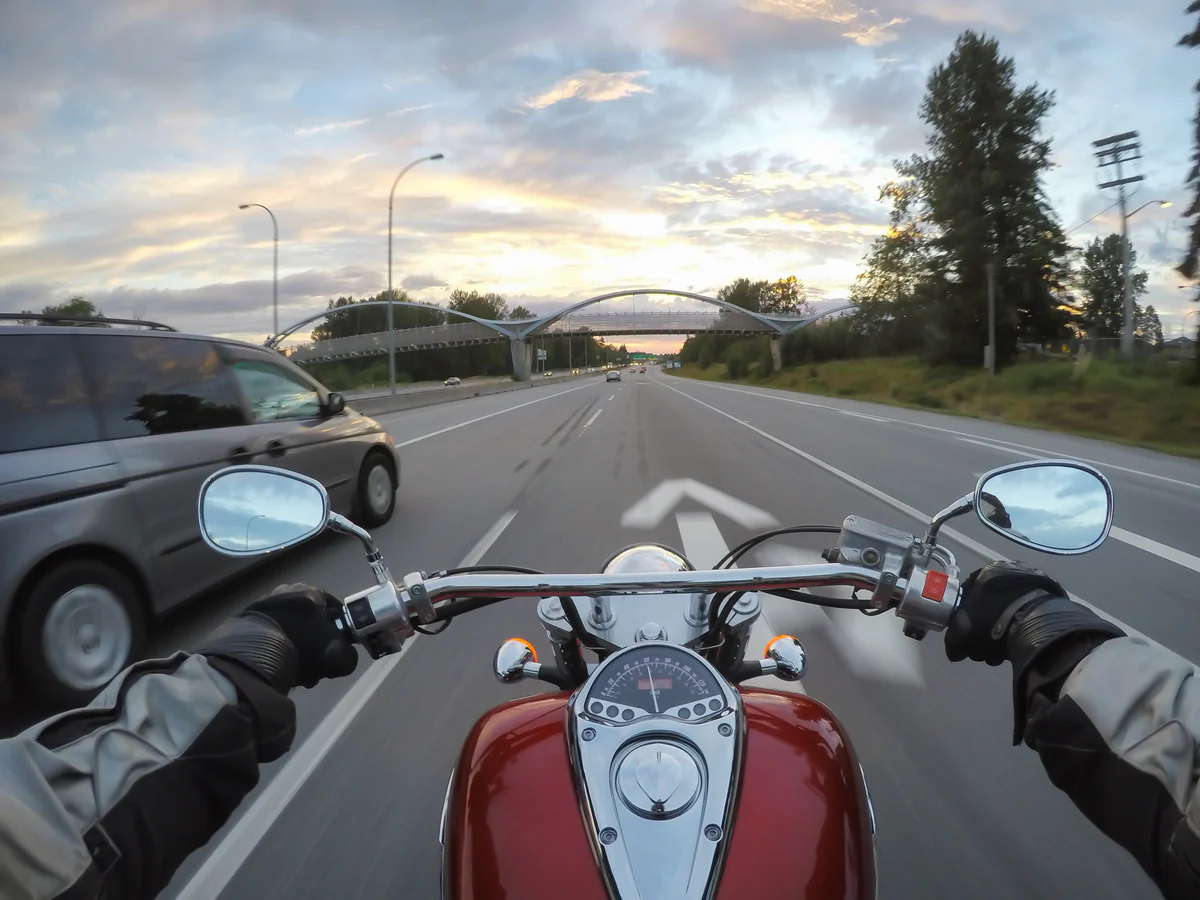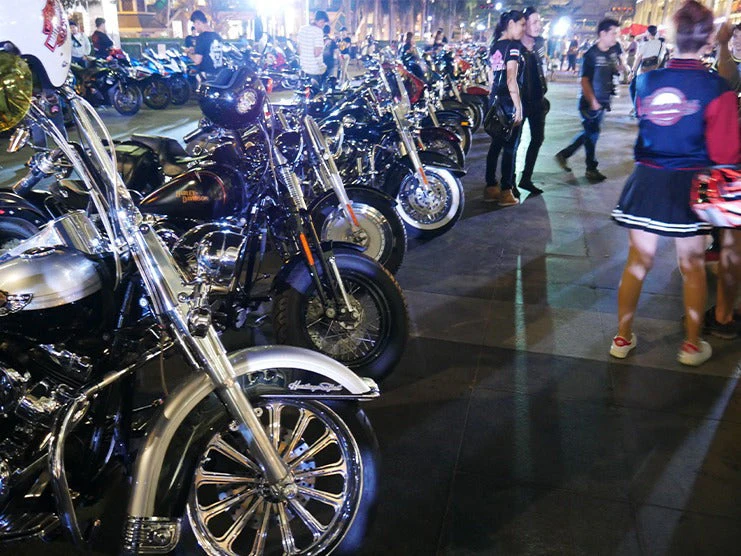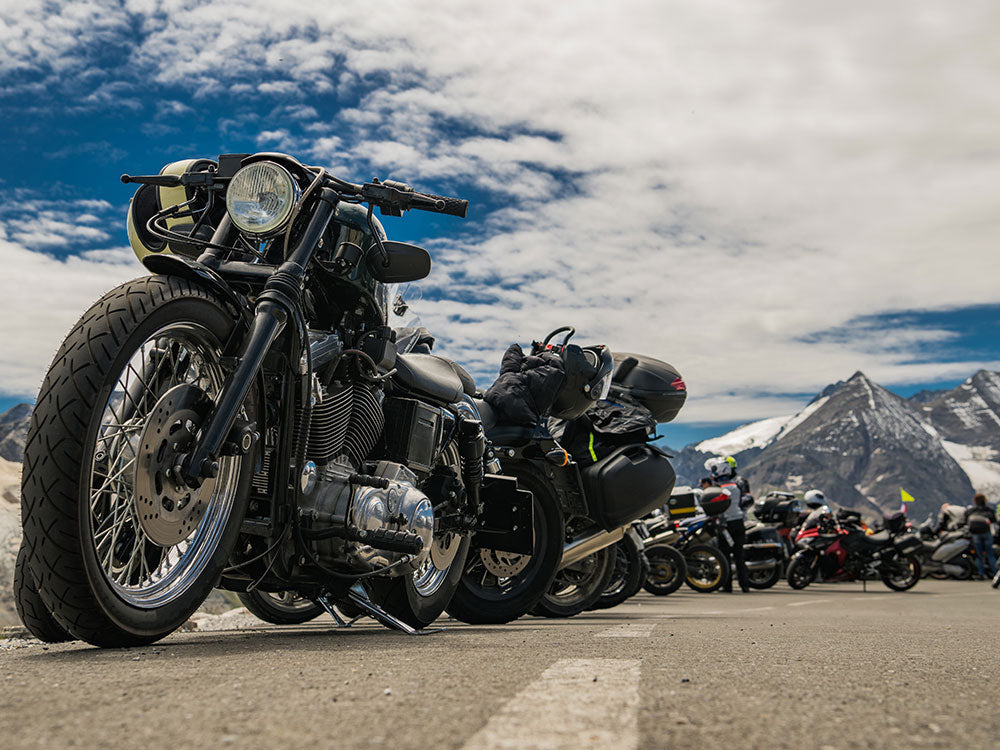Riding a motorcycle is a fun and rewarding activity, but has its share of dangers. Whether you’re a novice or an experienced rider, you may be prone to bad habits that could result in mechanical issues. Bad riding habits may not seem like a problem at first, but they can quickly increase the risk of putting yourself and others at risk.
This article will highlight the top 20 bad habits of motorcyclists that need to be broken.
Table of Content

1. Not Wearing Safety Gear
When riding a motorcycle, it is crucial to wear appropriate protection.
We see a lot of bikers riding in t-shirts, and we can just imagine how terrible it can be. You never know what may occur when riding a motorcycle; thus, it is always preferable to wear proper safety gear that includes a helmet, riding pants and jacket, and goggles.
Consequences
- Can be fined for not wearing a helmet
- Exposed to the elements
- Increased risk of serious or fatal injuries
2. Tailgating/Speeding
Speeding and tailgating are dangerous no matter what kind of vehicle you drive, but it becomes more risky when riding a motorbike.
Although it can be tempting to ride at high speed, you may not be able to react in time to rainy and windy weather, potholes, other cars, etc.
unless you have an excellent reaction time. Avoid tailgating as it slows down your reaction time. If you need to overtake a car that is moving too slowly, pass it when it is safe to do so.
Consequences
- Poor reaction time
- Rear-end collisions
3. Putting the Motorcycle’s Gear in Neutral When Stopped
Motorcyclists often put their bikes in neutral when stopped at the red light so they do not have to keep holding the clutch. But when the traffic light turns green, it takes a few seconds to switch your motorcycle back to first gear. This may delay traffic behind you or result in another vehicle colliding with your motorcycle’s rear.
Keep your bike in first gear when coming to a stop. This will ensure you can respond quickly and pick up speed before another vehicle rear-ends your motorcycle.
Consequences
- Rear-end collisions
4. Not Covering Controls
When riding, many motorcyclists like to leave their controls (clutch, brake pedal, and brake lever) exposed. In the city, where there is less room to maneuver and brake, leaving the controls exposed can be risky. A rider who covers the controls has an extra second to react and possibly avoid an accident. When riding on highways, you can leave the clutch and brake pedal exposed to an extent, but the brake lever should always be covered.
Consequences
- Shorter reaction time
- High risk of collision due to panic braking
5. Ignoring Bike Maintenance
Many motorcyclists neglect maintaining their bikes and rely on service centers to take care of their motorcycles. However, modern bikes require far less maintenance than older models. Still, they must be maintained regularly to ensure they will continue operating optimally.
When tires are properly inflated and have enough treads, they perform better. The braking system must be filled with fresh fluid and have sufficient padding. Even an extremely loose chain might make it more difficult to turn corners.
If even a small motorcycle part becomes worn out, it could affect its performance if it is not repaired or replaced soon. Riders should actively check brake pads, chains and sprockets, and tire pressure, among other things. These little adjustments will go a long way in maintaining a smooth ride.
Consequences
- Causes motorcycle parts to break down
- Increased risk of accidents
6. Idling With Pressed Clutch
When riding a bike, you often have to stop multiple times. At a stop sign or traffic light, many people brake without shifting gears. By applying the clutch or changing gears, the motorcycle's engine is kept running.
If you do this frequently, the engine will suffer more strain and stress, which might lead to the clutch plate and engine being damaged.
Consequences
- More stress on the engine
- Engine and clutch plate damage
7. Starting at a Higher Gear
When a bike is idle, many people start the bike without downshifting the gears. Instead, they begin accelerating the bike at a pre-set higher gear. A higher gear causes the moving parts to rotate at a higher gear ratio, which shortens the lifespan of the clutch and engine while damaging the gears. Downshifting the gears before accelerating is a must.
Consequences
- Reduce the lifespan of the engine and clutch
8. Crossing Speed Breaker Without Lowering the Gear
We all slow down our motorcycles to pass these speed bumps or terrible roads when riding in cities. But a lot of people slow down their bikes to cross speed breakers without lowering the gear, which is a big mistake.
After crossing the speed bumps, people try to accelerate their bikes with high gears, which increases the pressure and stress on the bike engine and shortens its lifespan. It can also harm your motorcycle’s engine and clutch. You should lower the gear on your bike to slow down when you pass the speed breaker.
Consequences
- More stress and pressure on the motorcycle’s engine
- Shortening the engine’s lifespan
9. Not Looking Far Enough Ahead on the Road
Many motorcyclists ride as though they are inside a bubble and never scan their surroundings. If you are riding at more than 100 feet per second on the highway, you will only have one second to deal with everything that arises in the road if you are gazing 100 feet in front of you.
When riding a motorbike, be mindful of the brake lights of the vehicle ahead of you. Try to scan at least five cars ahead to get a glimpse of any possible hazards. Look ahead as far as you can when entering a corner. This slows the sense of speed around the curve visually and allows you more time to react to vehicles or any other danger on the road.
Consequences
- Shorter reaction time
- Possibility of road hazards
10. Not Practicing Frequently
Riding a motorcycle is hard to master and requires practicing regularly to familiarize themselves with how to operate a two-wheeler. When riders become comfortable on their motorbikes, they often neglect to practice their riding skills. One of the most important skills is to apply maximum braking. If the bike is fitted with ABS, make sure to not suddenly apply the brakes in a panic or they may lock up. Besides braking, make sure to keep practicing all other riding skills.
Consequences
- Severe road accidents
- Serious injuries
11. Not Planning an Escape Route
When you stop behind a car, do you stay in the middle lane or swerve to the side into an adjacent lane if an incoming vehicle looks like it is going to hit you? The same is true while riding on a highway with multiple lanes and vehicles surrounding you. Do you have a prepared escape route in case another vehicle starts to change lanes into you? Always keep an eye out for potential threats and be prepared to maneuver into an open space to avoid a collision.
Consequences
- Rear-end collisions
12. Riding in a Vehicle’s Blind Spot
When you are riding a motorcycle, make sure you are visible to other riders or drivers. Due to having fewer safety features, bikers are more vulnerable on the road. All vehicles have blind spots, which means motorcyclists should try to stay out of them as much as possible.
Adjust your position or speed so you are visible in the rearview mirrors of the vehicle ahead.
Consequences
- Invisible to other drivers
- Risk of accident
13. Not Doing a Pre-Ride Check
As stated previously, routine maintenance will keep your bike in prime condition. But sometimes things change instantly and remain unnoticed. As you approach your bike, give it a quick visual once-over to see if any new leaks have appeared. Starting your engine and cycling through all the lights will help determine whether a bulb has blown out or if the brake light switch is malfunctioning. It is best to conduct a pre-ride check in a garage. You should also inspect the tires to make sure there are no punctures in the walls. By performing these simple inspections before every ride you can identify and fix minor issues before they become larger ones.
Consequences
- Motorcycle parts malfunctioning
14. Overconfidence
Many riders often pride themselves on their riding experience. But even experienced riders can become careless and forget to check their blind spots, apply the brakes with the clutch pressed, etc. There’s always room for improvement no matter how experienced a rider you are. Some riders become overconfident about their braking ability which can lead to tailgating. Being overconfident, riders believe that they can handle every situation on the road, which often leads to an accident. So avoid being overconfident and admit that you lack certain riding skills and practice them.
Consequences
- Risk of accidents
- Serious injuries
15. Low Tire Pressure
Riding a motorcycle with tires at low pressure is often due to riders not checking the tire pressure or ignoring the low tire pressure. Low tire pressure causes more stress on the motorcycle’s engine and makes it difficult to carry a passenger.
Consequences
- More stress on the engine
- Difficult to carry a passenger
16. Pressing Half Clutch
Many riders have the habit of riding with a half-clutch. Continuing to ride a motorcycle while slightly pressing the clutch, damages the clutch plate and reduces its lifespan.
Consequences
- Damages the clutch plate and shorten its lifespan
17. Struggling to Keep Pace with Riding Group
When riding with a group, you may struggle to keep up with the other riders. Trying to match the speed of the other riders could increase the risk of riding recklessly and getting into an accident. When stopped, ask your friends to adjust their speed the next time you get on the road.
Consequences
- High risk of accident
18. Staying in the Center Lane
When following a car in the center lane, a pothole may suddenly appear and cause you to lose balance. Try to follow the tire tracks of the vehicle in front of you. Riding on the tire track may help you avoid an oil slick or a pothole. Moreover, avoid riding on the tracks untouched by the tires of the vehicles, these tracks usually have the presence of accumulated dirt, grime, oil, etc.
Consequences
- Hitting a pothole
- Sliding on dirt, grime, or oil
19. Over Relying on the Rear Brake
Many riders have a bad habit of using the rear brake exclusively as it’s easier to use. But this can be dangerous if a vehicle in front of you suddenly stops as suddenly applying the rear brake could cause the rear wheel to lock up and lose traction.
Applying the front and rear brakes simultaneously is the best way to stop a bike. Your motorcycle’s weight shifts forward when you decelerate, which means that the front brake provides more braking power than the rear brake.
Consequences
- Causes the rear tire to lock up
- Risk of an accident
20. Changing Gear With Half Pressed Clutch
Many riders have the habit of changing gears while pressing the half-clutch. Because of this, friction between the motorcycle gear teeth inside the gearbox increases. Never change the gear with the half clutch pressed; always press the full clutch while changing gears.
Consequences
- Friction between the gear teeth
21. Last Words
Motorcycle accidents happen, no matter how careful or experienced you are. Avoiding these bad riding habits will help you stay better protected and safe on the road while improving your riding skills. If you wish to improve its appearance, you can add new Saddlebags, seats, crash bars, fairings, handlebars, luggage racks, and sissy bars.













Leave a comment
All comments are moderated before being published.
This site is protected by hCaptcha and the hCaptcha Privacy Policy and Terms of Service apply.